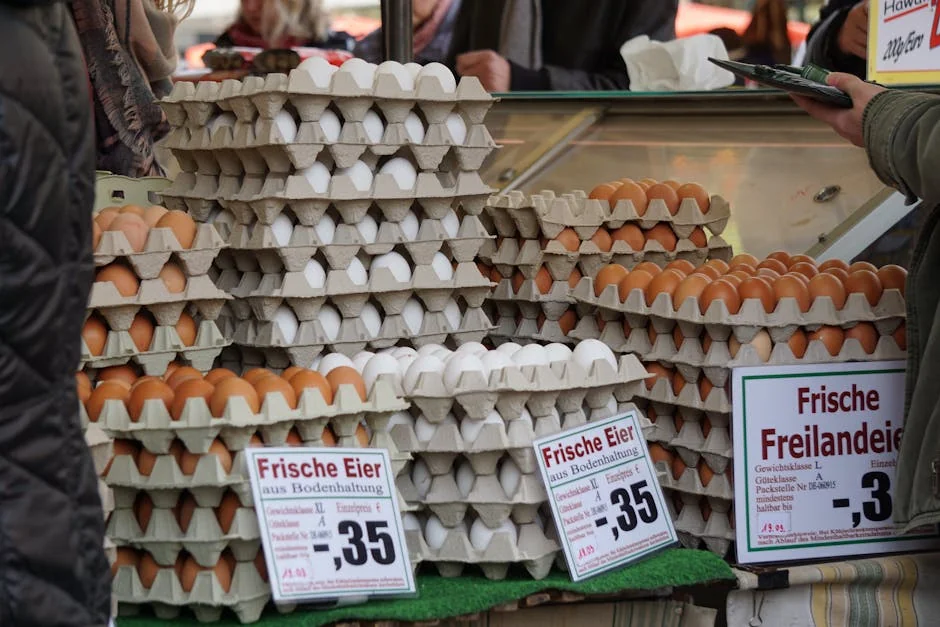Introduction
Air Fryer Edibles: Complete Guide to Crispy Treats
Ever wondered how to achieve that perfect golden crunch without deep-frying? Air fryer edibles have revolutionized home cooking, delivering restaurant-quality crispy treats with a fraction of the oil and hassle. Whether you're a health-conscious foodie or simply tired of messy traditional frying, air fryer edibles offer an exciting alternative that doesn't compromise on taste or texture.
In this comprehensive guide, we'll unlock the secrets behind air fryer edibles and show you why this cooking method has become a kitchen game-changer. You'll discover how advanced air circulation technology transforms ordinary ingredients into irresistibly crispy masterpieces—all while reducing fat content by up to 80%.
We'll walk you through understanding the innovative technology behind air fryers and how circulating heat creates those coveted crispy exteriors. You'll explore the diverse types of edibles that thrive in air fryers, from classic comfort foods to creative gourmet options. Most importantly, you'll learn the science of how rapid air circulation produces that signature crunch that keeps people coming back for more.
By the end, you'll be equipped with everything needed to master air fryer edibles and impress your family with delicious, guilt-free meals. Let's get started!
What Are Air Fryer Edibles and How Do They Work?
Air fryer edibles refer to any food items cooked using air fryer technology—a revolutionary cooking method that produces crispy, delicious results without traditional deep frying. These appliances use rapid air circulation and high heat to cook food, mimicking the texture and taste of deep-fried dishes while using little to no oil. Understanding how air fryer edibles work helps you maximize this technology in your kitchen and expand your cooking repertoire beyond conventional methods.
Understanding Air Fryer Technology and Circulating Heat
Air fryers operate through a process called convection cooking, where a heating element rapidly heats air to temperatures between 300-400°F. This superheated air circulates around your food at high speeds, creating a convection effect that cooks food evenly and quickly. The intense heat causes the Maillard reaction on food surfaces, producing that desirable golden-brown exterior and crispy texture.
The key difference from traditional ovens is the speed and intensity of air circulation. Air fryers force hot air through a perforated basket at extremely high velocities, reaching every surface of your food simultaneously. This concentrated heat exposure cooks food 20-30% faster than conventional ovens while using minimal oil—typically just 1-2 tablespoons compared to cups needed for deep frying.
Types of Edibles Perfect for Air Frying
Nearly any food can become an air fryer edible, but certain items excel in this cooking environment. Proteins like chicken thigh air fryer dishes, fish fillets, and frying pork chops in air fryer cook beautifully, developing crispy exteriors while staying moist inside. Vegetables including Brussels sprouts, broccoli, and sweet potatoes air fryer preparations become perfectly tender with caramelized edges.
Frozen foods represent the most convenient air fryer edibles category. French fries, chicken nuggets, and mozzarella sticks cook directly from frozen without thawing, making them ideal for quick meals. Baked goods like donuts and pastries also thrive in air fryers, emerging fluffy inside with crispy outsides.
How Air Circulation Creates Crispy Textures Without Deep Frying
The secret to achieving restaurant-quality crispiness lies in the moisture removal process. As superheated air surrounds your food, it rapidly evaporates surface moisture, creating the crispy exterior you crave. Simultaneously, the intense heat seals proteins and starches, locking in interior moisture and flavor.
The perforated basket design is crucial—it allows hot air to reach the bottom and sides of food, not just the top. This 360-degree heat exposure ensures even browning and consistent texture throughout. For optimal results, shake your basket halfway through cooking to promote even air exposure and prevent sticking.
Why Air Fryer Edibles Are Better Than Traditional Frying Methods
Air fryers have revolutionized home cooking by delivering crispy, delicious results without the drawbacks of traditional deep frying. Whether you're preparing vegetables, proteins, or snacks, air fryer edibles offer significant advantages that make them the smarter choice for modern kitchens. From health improvements to cost savings, the benefits extend far beyond simple convenience.
Health Benefits: Reduced Oil, Lower Calories, and Healthier Cooking
Traditional deep frying requires submerging food in large quantities of oil, often resulting in excessive calorie absorption and unhealthy fat content. Air fryers use rapid air circulation technology to cook food with minimal oil—typically just one to two tablespoons compared to cups required for conventional frying. This dramatic reduction in oil consumption can decrease calorie intake by up to 80% while maintaining that satisfying crispy texture.
Beyond calorie reduction, air fryers eliminate the formation of harmful compounds like acrylamide and trans fats that develop during prolonged exposure to high-temperature oil. Your cardiovascular health improves when you reduce saturated fat intake, making air fryer edibles an excellent option for heart-conscious eaters. Additionally, the controlled cooking environment prevents oil oxidation, which occurs in traditional fryers and can produce free radicals linked to inflammation and chronic disease.
Time Efficiency and Convenience in the Kitchen
Air fryers preheat in just two to three minutes, compared to 15-20 minutes for conventional deep fryers. Most foods cook 20-30% faster due to the efficient heat circulation, allowing you to prepare weeknight dinners in under 15 minutes. There's no messy oil disposal, minimal splashing, and significantly less cleanup—simply wipe the basket and you're done.
The compact design of air fryers makes them ideal for small kitchens, dorm rooms, and RVs. You'll appreciate the one-step cooking process: load the basket, set the temperature, and walk away. No flipping or monitoring required for most foods.
Cost Savings and Energy Efficiency Compared to Traditional Fryers
Air fryers consume approximately 50% less energy than conventional ovens and traditional deep fryers. Your electricity bills noticeably decrease with regular air fryer use, especially for households cooking multiple times weekly. A quality air fryer pays for itself within months through energy savings alone.
You'll also save money on oil purchases and reduce food waste through more precise cooking. Air fryers use less oil per meal, and their efficiency means fewer cooking mistakes and perfectly cooked food every time. Over a year, families can save hundreds of dollars while enjoying healthier, faster meals.
Step-by-Step Process for Preparing Air Fryer Edibles
Mastering the preparation of air fryer edibles requires understanding each stage of the cooking process, from ingredient selection through final plating. This comprehensive guide walks you through essential techniques that ensure consistent, delicious results every time you use your air fryer.
Preparation and Ingredient Selection for Optimal Results
Start by selecting fresh, quality ingredients that cook evenly in your air fryer. Pat proteins like chicken breasts, fish fillets, or shrimp completely dry with paper towels—moisture prevents proper crisping and browning. For vegetables, cut them into uniform sizes so they cook at the same rate; aim for pieces roughly ½ to ¾ inches thick.
Prep your ingredients 15-20 minutes before cooking to allow them to reach room temperature. This simple step dramatically improves cooking consistency and reduces the need for extended cooking times. Lightly coat your air fryer basket with cooking spray or oil to prevent sticking and promote even heat circulation around your food.
Organize all components before you begin cooking. Having your seasonings, marinades, and prepared ingredients within reach prevents mistakes and keeps your workflow efficient. This mise en place approach is especially important when preparing multiple air fryer edibles simultaneously.
Seasoning Techniques and Flavor Enhancement Methods
Apply dry rubs directly to proteins and vegetables at least 10 minutes before cooking, allowing flavors to penetrate the surface. Combine herbs, spices, salt, and pepper in a small bowl, then massage the mixture evenly across your ingredients for consistent taste throughout.
For wet marinades, submerge your proteins for 30 minutes to 2 hours depending on thickness and type. Lighter marinades work best for delicate fish, while heartier options suit beef and pork. Always pat marinated items dry before air frying to achieve maximum crispiness.
Consider layering flavors by adding fresh herbs or citrus zest during the final two minutes of cooking. This technique preserves delicate flavors that would otherwise diminish during extended heat exposure.
Temperature Settings and Cooking Time Guidelines for Different Foods
Most air fryer edibles cook successfully between 350°F and 400°F. Chicken breasts require 12-15 minutes at 380°F, while frozen vegetables cook in 8-12 minutes at 390°F. For delicate proteins like how long to air fryer salmon, fillets need only 10-12 minutes at 370°F to avoid overcooking.
Check food halfway through cooking and shake the basket to ensure even browning. Adjust times based on your specific air fryer model, as wattage variations affect cooking speed. Always use a meat thermometer to verify doneness: chicken reaches 165°F, pork 145°F, and fish 145°F internally.
Essential Tips and Best Practices for Air Fryer Edibles
Mastering air fryer cooking requires more than just setting a temperature and walking away. The difference between mediocre and restaurant-quality results lies in understanding fundamental techniques that maximize your air fryer's potential. By implementing these expert-backed strategies, you'll achieve consistently crispy, evenly cooked air fryer edibles every single time.
Proper Basket Loading and Spacing for Even Cooking
The most common mistake home cooks make is overcrowding the air fryer basket. When food pieces touch or overlap, steam accumulates underneath, resulting in soggy, unevenly cooked results instead of the desired crispiness. Arrange your ingredients in a single layer with at least a quarter-inch of space between each piece to allow hot air to circulate freely.
For frozen foods like french fries or chicken wings, spread them out completely before cooking begins. If you're preparing larger batches, cook in multiple rounds rather than forcing everything into one cycle. This approach takes slightly longer but guarantees superior texture and flavor development. Remember that different foods require different spacing—delicate items like vegetable chips need more room than denser foods like potato wedges.
Shaking and Flipping Techniques for Maximum Crispiness
Halfway through your cooking time, shake the basket or flip individual pieces to ensure even browning on all sides. This simple action prevents hot spots and promotes uniform crisping throughout your air fryer edibles. For items like chicken tenders or vegetable fries, a vigorous shake works perfectly and takes just five seconds.
Larger items such as chicken breasts or steak benefit from manual flipping using tongs. Flip each piece individually to maintain proper spacing and ensure both sides receive direct heat exposure. This technique is particularly important for thicker cuts that need extended cooking times. The extra effort during cooking eliminates the need for post-cooking adjustments and guarantees professional-quality results.
Cleaning and Maintenance to Extend Your Air Fryer's Lifespan
Regular maintenance keeps your air fryer performing optimally and prevents flavor transfer between different foods. After each use, remove the basket and tray, then wash them with warm soapy water or place them in the dishwasher if manufacturer-approved. Wipe the interior chamber with a damp cloth to remove any grease buildup or food particles.
Check the heating element monthly for accumulated debris and gently clean it with a soft brush if needed. Store your air fryer in a dry location and avoid stacking items on top of it. Proper maintenance extends your appliance's lifespan significantly while ensuring your food always tastes fresh and delicious.
Common Mistakes to Avoid When Making Air Fryer Edibles
Air fryer cooking offers convenience and healthier results, but beginners often make preventable mistakes that compromise their dishes. Understanding these common errors helps you achieve consistently delicious air fryer edibles every time. By learning what to avoid, you'll save time, reduce food waste, and improve your cooking confidence.
Overcrowding the Basket and Uneven Cooking Problems
One of the most frequent mistakes is stuffing too much food into the air fryer basket at once. When you overcrowd the space, hot air cannot circulate properly around each item, resulting in unevenly cooked food with some pieces crispy and others undercooked. Vegetables may remain soft while chicken stays rubbery, creating disappointing meals.
The solution is simple: arrange food in a single layer with minimal overlap. If you need to cook larger quantities, work in batches rather than compromising cooking quality. For items like French fries or chicken nuggets, shake the basket halfway through cooking to ensure even heat exposure on all sides. This extra step takes just 10 seconds but dramatically improves results.
Incorrect Temperature and Time Settings for Different Foods
Many home cooks use generic temperature and time settings for all foods, ignoring the fact that different ingredients require different conditions. Frozen shrimp cooked at the same temperature as fresh vegetables will produce vastly different outcomes. Following recipe guidelines is essential—what works for frozen fries won't work for delicate fish fillets.
Start by consulting reliable recipes or your air fryer's manual for specific settings. Most proteins benefit from 350-400°F, while vegetables often cook better at 375-400°F. Always check food a few minutes before the suggested time expires, especially when trying new recipes. This prevents overcooking and helps you learn your specific air fryer model's quirks, as cooking times vary between brands.
Neglecting Oil Application and Seasoning Distribution
Skipping oil or applying it unevenly leads to dry, bland air fryer edibles that disappoint. Oil promotes browning and adds flavor while helping seasonings adhere to food surfaces. Many people either forget oil entirely or spray it too lightly, missing crucial coverage areas.
Use a light hand with oil—you need just enough to coat surfaces, not drench them. Apply seasoning directly to the oil-coated food, ensuring even distribution before cooking begins. For best results, toss ingredients gently in a bowl with oil and seasonings before placing them in the basket. This method guarantees that every piece receives proper flavoring and achieves that desirable golden exterior.
Conclusion
Air fryer edibles have fundamentally transformed how we approach home cooking, proving that you don't need traditional deep-frying methods to achieve restaurant-quality results. Throughout this guide, we've explored the remarkable versatility, health benefits, and convenience that air fryers bring to your kitchen.
The key takeaways are clear: first, air fryer edibles deliver exceptional texture and taste while using up to 80% less oil than conventional frying methods, making them a healthier choice for health-conscious families. Second, the time-saving aspect cannot be overstated—preheating takes minutes, and most recipes cook in under 20 minutes, perfect for busy weeknights. Third, the range of possibilities is virtually endless, from classic appetizers and main courses to unexpected desserts, allowing you to experiment and discover new favorites. Finally, minimal cleanup and maintenance mean you'll actually use your air fryer regularly, not let it collect dust in a cabinet.
Now it's time to put this knowledge into action. Start by selecting one or two simple recipes that excite you, then gradually expand your repertoire as you become comfortable with temperature settings and cooking times. Don't be afraid to experiment—air frying is forgiving, and most mistakes are still delicious learning opportunities.
Your journey toward crispy, guilt-free meals starts today. Invest in quality ingredients, trust the process, and prepare to impress yourself and your loved ones with consistently outstanding results. Your air fryer is ready to become your kitchen's most valuable ally.



